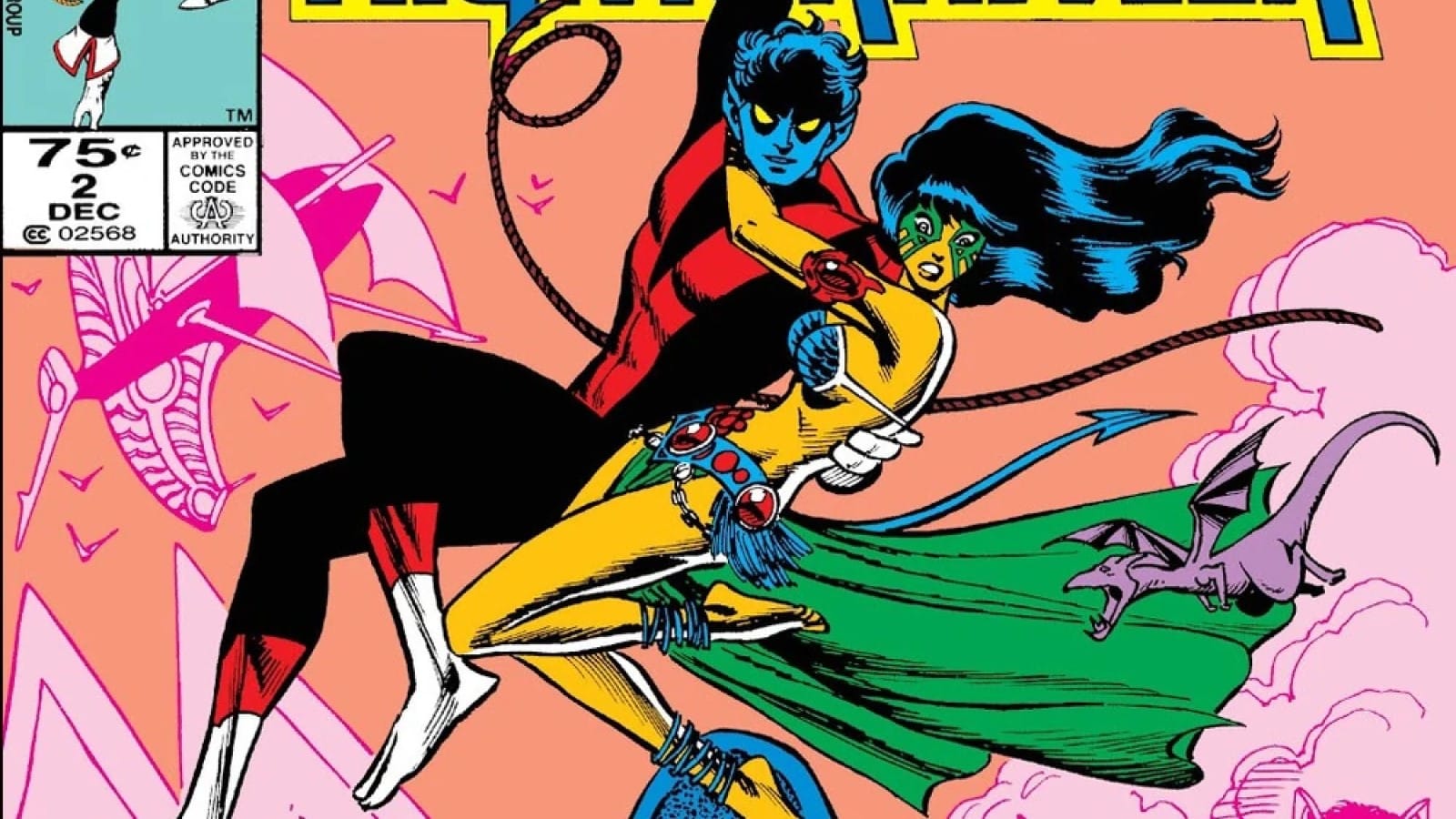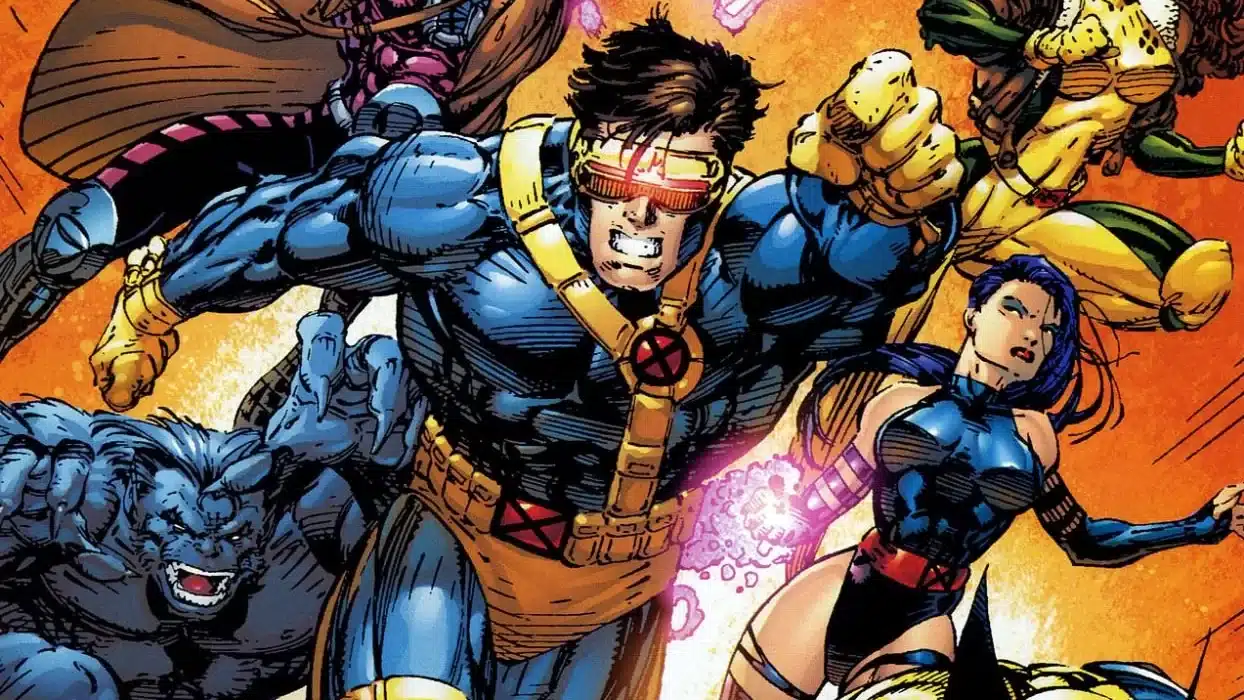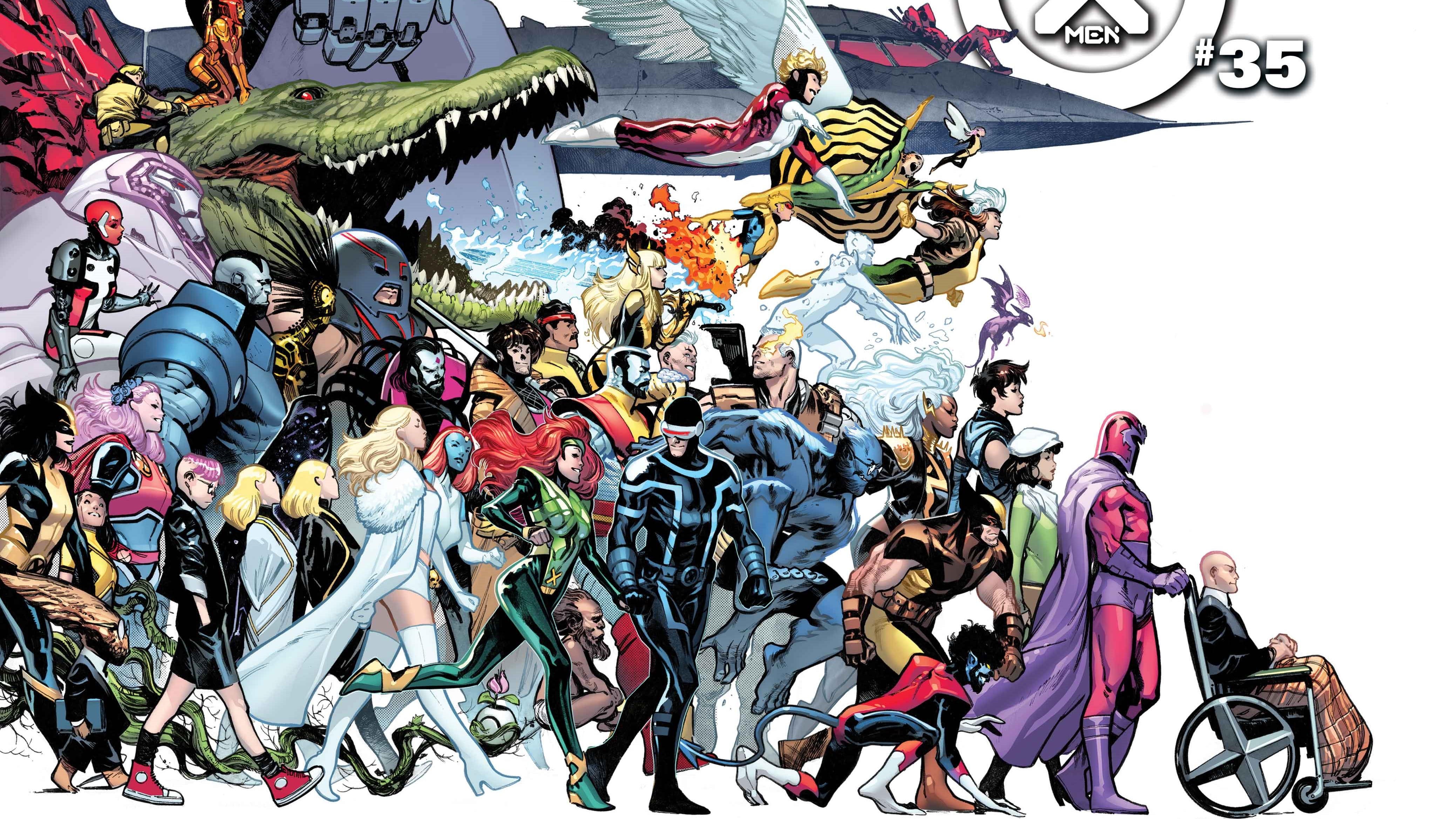Nov. 11 was the birthday of Dave Cockrum. In his honor, it’s also the unofficial birthday of Nightcrawler, the demon turned fuzzy elf Cockrum first dreamed up during a storm in Guam before bringing him to the X-Men, where he lavished love upon the swashbuckling version of the character.
By all accounts, there’s lots of Dave in that classic version of Kurt, the one who’s always ready with a smile and a joke, and who dreams about pirates and pulpy adventures and rescuing damsels in distress. Nightcrawler is a swashbuckler in part because Cockrum wanted him to be. But in stories by Cockrum, Chris Claremont and others, Kurt Wagner’s penchant for a bygone genre of escapist action-adventure is also crucial to the character’s symbolism and psychology.
Nightcrawler is hardly the first superhero to take inspiration from swashbucklers. The entire superhero genre owes a tremendous debt to pulp heroes like Zorro, created in 1919 by Johnston McCulley, and other masked vigilantes like the Scarlet Pimpernel, who debuted in a stage play in 1903 by Baroness Orczy before returning in 1905 in a popular series of novels, also penned by the Baroness. Alexandre Dumas’ The Three Musketeers (1844) is another swashbuckling staple, as are various versions of the Robin Hood legend and lots and lots of pirate stories.
But what, exactly, defines a swashbuckler? In his seminal book Swordsmen of the Stage and Screen, scholar Jeffrey Richards says swashbuckler movies involve “an exhilarating excursion into pure style, a heady blend of male beauty and agility, the grace and colour of historical costume, the opulence and splendour of period sets and the spellbinding legerdemain of horseback chases, chandelier-swinging and dazzling swordplay.” The fact swashbucklers are set in the past is essential to their difference from superheroes, who generally occupy technology-rich presents and futures. Swashbucklers are romantic, in part, because they’re nostalgic for imagined pasts. It’s a deeply escapist, spectacular and self-consciously performative genre, in which winning a fight requires not only strength and skill, but quick wits and fabulous fashion.
What interests me most about swashbucklers, in general and in terms of their relationship to Nightcrawler, is the gender play and rebellious sexuality woven into their emphasis on a certain kind of male beauty. Many action and adventure heroes, certainly including superheroes, are presented as physical ideals, and there’s an implied eroticism to that. Comic book superheroes and the muscular action movie stars who helped inspire the physiques of today’s movie superheroes are clearly meant to appeal to diverse gazes. But there’s a reason superhero movies keep banishing bright colors and flimsy spandex to the closet in favor of bulky black leather, muted tones and armor — because some people are uncomfortable with superheroes looking like men in tights. Swashbucklers, meanwhile, proudly wear tights. And decolletage-baring tunics. And thigh-high suede boots. And balletic slippers. And sparkly harem pants. And sashes, scarves and all manner of outrageous hats. And plenty of velvet, aka the material that most closely approximates the fur of a certain blue swashbuckling mutant.

Male swashbucklers aren’t just handsome — they’re beautiful. This difference is subtle but important. Within Western culture, handsomeness is a stereotypical masculine quality, connoting someone/something solid, respectable and timeless, like a nicely fitted suit. Beauty, meanwhile, is a stereotypically feminine quality, associated with glamour, performance, and spectacle, like a glittering evening dress.
It wasn’t always this way. In her book Sex and Suits, Anne Hollander describes a shift in the second half of the 18th century toward streamlining male dress and making fashion — i.e. styles and silhouettes that change by the season and in conversation with the moods of the wearer — more solely the purview of women. The reasons are complicated and beyond the scope of this essay. But the point is, swashbucklers gesture toward an earlier era where flamboyance was less restricted, which can feel, to modern audiences, like a foreign and fascinating type of gender fluidity.
This exotic flair extends to the sexiness of swashbucklers. As scholar Daniel Cornell puts it in an essay about the star text of Douglas Fairbanks, the swashbuckling icon’s body was conceived and marketed “as an object of erotic display by emphasizing spectacle elements over narrative.” The star text of Kurt Wagner’s idol, Errol Flynn, is even more strongly associated with licentiousness. Reviewing a collection of biographies of Flynn, scholar Peter Valenti describes the actor this way: “as Peter Blood and Robin Hood, [Flynn] became a dashing figure fighting oppression while emanating a strong sexuality, which quickly became his dominant attribute.” An infamous biography of Flynn by Charles Highman, released in 1980 — five years after Nightcrawler’s debut — also claimed he was bisexual, a charge the Flynn estate vigorously contested in a lawsuit, and may in fact be untrue. Still, it’s interesting that there was public discourse debating Flynn’s sexual orientation at a time when Nightcrawler was still using his image inducer to resemble the film star.
If you know anything about Nightcrawler, you know he’s blue with pointed ears and a devil’s tail, meaning that without the help of futuristic holograms, he can’t pass for human. If you know a little bit more about Nightcrawler (the good comics version, not the less-good movie version), you’ll also know he doesn’t want to be human; self-acceptance is kind of his thing. But like anyone — especially anyone who’s been told their body is a problem — Kurt’s got insecurities. When he dreams about being Errol Flynn and even impersonates him, he’s dreaming about being conventionally handsome. But he’s also and more specifically dreaming about being beautiful in the swashbuckling sense, meaning he doesn’t want to be normal. He wants to be special and different but loved for his specialness and difference. These desires are drawn into the best visualizations of Nightcrawler. This includes Cockrum’s version of Kurt, who was always ready to throw on a loosely tied smoking jacket or exploit his acrobatic flexibility for dramatic effect. And it’s definitely true of Alan Davis’ iconic rendition of Kurt, who always aims for full extension on a backflip, his three-fingered hands and feet perfectly pointed to accentuate his balletic grace. In recent comics, artists such as Valerio Schiti and Lucas Werneck afford Kurt a similar fluid grace.

Nightcrawler also cultivates a sexual identity that’s atypical of male superheroes but very typical of swashbucklers. Plenty of male superheroes get around, but few make themselves as accessible to diverse gazes as Kurt Wagner does. Take Uncanny X-Men #168 (1983), where a grinning Kurt strikes a Burt Reynolds-in-Playgirl pose on Amanda Sefton’s sofa, a Bamf doll positioned in front of his crotch. Or take the next issue, Uncanny X-Men #169, which features Kurt luxuriating in a hot tub before teleporting around the city damp and naked. Then there’s the fondly remembered Excalibur #16 (1989), which sees Kurt once again engaging in watery sexytimes then lounging, damp and debauched, for an entire day on a round bed with his beautiful (but evil!) paramour, licking wine off her skin while wearing a short robe that leaves little to the imagination. There’s also plenty of implied sexual deviance in Cockrum’s wonderfully bizarre 1985 Nightcrawler miniseries, in which Kurt seems willing to permanently desert his own reality and all his friends for a chance to spend quality time with a princess and frees himself from the deadly embrace of a gooey pink tenacle monster whose mouth definitely doesn’t resemble a vagina by tickling it into gleeful hysteria with his tail. The sexuality of most male superheroes is all angst and deferred longing. Swashbucklers experience no such qualms. For them, the pursuit of pleasure is inseparable from saving the day. And so it is for Kurt Wagner, a guy who often greets a lady by bowing and kissing her hand.

Yet beneath their veneer of rebellion, swashbucklers are often conservative figures. They fight the good fight against corrupt or oppressive regimes but are also, in general, oriented toward maintaining the status quo and its imperial authorities. The Three Musketeers defend the king against Cardinal Richelieu’s opportunistic scheming. Robin Hood opposes a bad king to preserve a good king. Captain Blood is a nobleman turned pirate who rebels against another bad king before switching sides to defend British colonies on behalf of another good king. The genre also traffics in plenty of Orientalism and white savior fantasies, and the sexual politics can be problematic, to say the least. On the one hand, a film like Captain Blood (1935) clearly presents Errol Flynn as an erotic spectacle, welcoming the possessive desires of anyone who wants to sex him. On the other hand, Flynn’s title character buys his female love interest from another pirate in part because he gets off on threatening and humiliating her. There’s also the dark side of Flynn’s real-world sexual exploits to contend with. In 1942, Flynn was put on trial for the statutory rape of two teenage girls. He was acquitted, but that meant even less back then than it does today. If you read the facts of the case, it’s a pretty textbook casting couch situation, and it almost certainly wasn’t the only time it happened. In a recent article analyzing discourses around Flynn’s rape trial, scholar Patricia O’Brien notes that Flynn openly discussed his appetite for underage girls on many occasions.
Comics that let Nightcrawler fully indulge his swashbuckling fantasies are not immune from these political problems. Kurt has an unfortunate tendency to kiss and tickle women without permission, even when it makes them uncomfortable or they directly ask him to stop. And he’s certainly become embroiled in a colonial fantasy or two, as in the story “Nightcrawler’s High Adventure” from Classic X-Men #23 (1988), where Kurt gleefully dons breeches and a pith helmet to save a virgin from being sacrificed by a group of generic “natives.” At the conclusion of the story, the rescued woman asks Kurt how she’ll ever repay him. He smiles a knowing smile and assures her she’ll find a way. Excalibur #31 (1990) tells a very similar story, except that one ends with Kurt declaring himself the ruler of a tropical island and its tribal inhabitants, subservient women at his feet while the woman who sided with the bad guy gets displayed in a cage.

The saving grace of Kurt’s swashbuckling is that it often includes a layer of irony and even a few tentative critiques of the toxic masculinity that informs certain heroic fantasies. In his ’85 miniseries, Cockrum has the princess offer herself to Kurt as a prize then flips the power dynamic; Kitty Pryde and Illyana Rasputin accidentally teleport away Kurt’s costume, leaving him naked and stammering before the princess’ lusty gaze. Cockrum also pokes fun at Kurt’s presumptions of chivalric heroism by introducing an anarchic, horny army of chibi Kurts, called Bamfs, who cause him plenty of trouble and embarrassment. And the female Bamfs turn the tables once again, making Kurt a victim of their aggressive flirtation, much to his chagrin. Other stories more directly interrogate Kurt’s fantasies. In Uncanny X-Men #204 (1987), reenacting the ’85 miniseries is presented as a desperate plot to avoid reckoning with difficult truths. A decidedly modern princess even accuses Kurt of being no different from the villainous Arcade: “Listen to yourself, Nightcrawler — you’re just like him! Hooked on excitement! … Is that all you are?!” And as much as Excalibur #16 indulges swashbuckling fantasies, it also forces Kurt to confront problematic preconceptions rooted in the conventions of the genre. By falsely assuming the beautiful blonde princess is a good guy while the blue pirates are bad guys, Kurt nearly gets himself and his teammates killed.
There’s also an implied ironic distance in the simple fact that as much as Nightcrawler might want to be in like Flynn, he can’t. He’ll always be blue and furry with a tail and pointed ears and the wrong number of fingers and toes. In other words, he’s always obviously performing the part, and his performance is always partly inadequate. Classic X-Men #23 acknowledges this. When Kurt dons the colonial costume, it literally doesn’t fit. He has to cut the toes off the boots to accommodate his mutant feet, his difference bursting out of his generic costume. Kurt’s desire to be a leading man within a world that consistently tells him he can’t is also intensely identifiable, as well as strangely hopeful. Because most of the time, Kurt performs the part successfully enough to save the day. This speaks to the transformative power of escapism, which is literally Kurt’s superpower, after all; teleporting is a form of magical relocation which is a form of transformation. Sometimes, playing a role is as good as living a role, since a role is just that — a role, a part in a play that often gets cast a certain way but doesn’t have to. Escaping into different perspectives can help us see ourselves better, just like playing with roles can be a way of reshaping them to fit us better.

Nightcrawler’s fondness for a nostalgic genre that was already out of fashion when the character debuted in 1975 also places him at odds with where superheroes and action genres in general were heading. Writing in 1977, Jeffrey Richards was already mourning the death of the swashbuckler: “The ringing speech, the romantic gesture, the balletic grace, the virtues which the swashbuckling hero incarnated … are alien to today’s style, which is tough, cynical, laconic, individualistic — in a word, ‘cool.’” In response to a 2021 Claremont Run thread about Nightcrawler, noted comics artist/writer Phil Jimenez strikes a similar tone, lamenting contemporary attempts to make Kurt a less joyful character: “It also makes me think about the drive by some to stamp out whimsy and flamboyance in super-hero comics, driven mostly by heterosexist fears, despite whimsy and flamboyance being baked into their DNA.” Coolness can be critical; it can also be cool for the sake of cool. And joy and flamboyance can offer their own kinds of critique and rebellion, especially in contexts that might be trying to stamp them out for the wrong reasons.
I never yearn for simpler times, which only ever seemed simple to certain people. But I often have occasion to feel nostalgic for heroes who like being heroes. Being a hero should be hard. But it doesn’t have to be joyless or prudish, and with the best versions of Nightcrawler, it isn’t. Dave Cockrum definitely understood that, which is why his birthday is Kurt’s.


Anna Peppard
Anna is a PhD-haver who writes and talks a lot about representations of gender and sexuality in pop culture, for academic books and journals and places like Shelfdust, The Middle Spaces, and The Walrus. She’s the editor of the award-winning anthology Supersex: Sexuality, Fantasy, and the Superhero and co-hosts the podcasts Three Panel Contrast and Oh Gosh, Oh Golly, Oh Wow!





